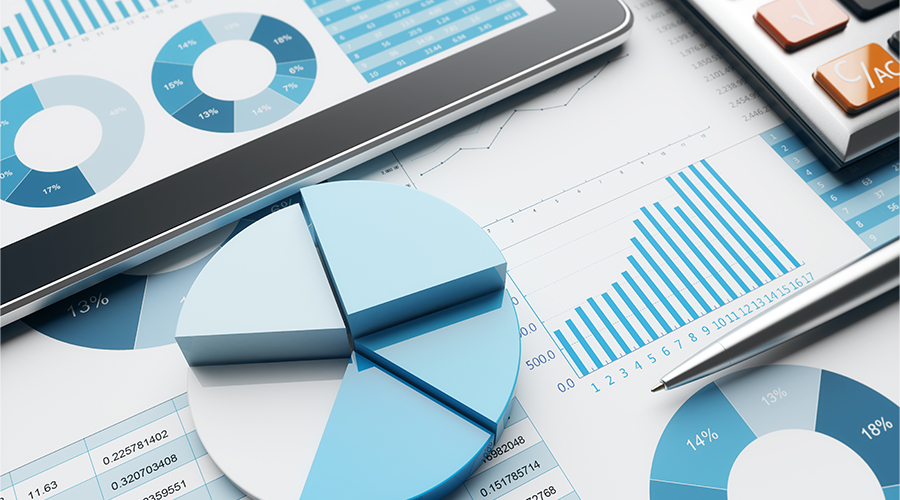
There is no doubt, the data-driven sports world is doing wonders. Whether you talk about making game plans, enhancing users’ experience, or enhancing the viewing experience of enthusiasts, the data-driven approach has shaped the sports orbit, in a better way. Mainly, two types of data are used in sports. One is static data and the other one is live data and both play a paramount role in sports.
Generally, both forms of data are collected by sports APIs for multiple purposes. The sports APIs are tools that allow the smooth transfer of these data i.e. from the stadium to the fans. The data is used by sports fans, sports organizations, sports trainers, data analysts, players, and teams.
They include information from the diverse sports world. It can be Live game scores, player performance metrics, team performance matrix, live commentary, and other live updates from ongoing matches. It can also include players’ records, team records, historical data, and more. In this article, you will get to know the major difference between static data and live data.
What is static data and how is it used in sports?
In sports, static data refers to the information collected from different sports matches, events, and competitions. Static data remains the same and cannot be updated once recorded. It can be Player Career Statistics, teams, players achievement, team achievement, historical winners, past match scores, and more. Static sports data is used by data analysts, trainers, and sports platforms for various reasons. Here is how static data is used:
For making game strategies
Coaches of sports teams use static data like player records, career matrices, and team records to identify players’ and teams’ past performance. They also analyze the opponent team’s strategy through data to see if their team is lacking somewhere in better preparation.
After analyzing the performance of both teams, they make decisions for the betterment of the team. Analysis of static data allows them to make well-informed changes in the team and make better game plans. Overall, they can track the current position of their team and take the necessary steps to make their status better in the game.
Player’s performance analysis
Static data allows trainers to get accurate information about players. They can analyze players’ performance from past matches based on career stats like goals scored, assists, batting averages, bowling averages and more. These static data allow them to enhance players’ performance for future matches, as they can analyze their weaknesses easily from the data.
Teams’ performance analysis
In the same way, static data allows trainers, researchers, and organizations to get all the information about teams of matches. They get all the updates like past performance records, no. of wins, no. of loss, team positions, team achievements, and more. It can help coaches to make better strategies for their team by analyzing the opponent team’s performance. It also helps fantasy sports organizations and betting platform users make correct decisions while playing and enjoying the game.
Improving fans’ experience
Static data can help different sports-related organizations to enhance the overall experience of their audience. The stats like historical data, team past performances, team records and more allow betting apps and websites to make their users bet based on accurate information. It allows them to win their bets and they can get various gifts and rewards.
Broadcasters and media houses can make well-informed articles and reports for their users. They also provide advanced data to their audience which enhances their experience.
What is Live data and how is it used in sports?
Unlike static data, live data can be updated every second. This data is to provide real-time updates from different matches and events. It shows the real-time situation of the ongoing matches and tournaments. It can be real-time live scores, players’ stats, team stats, match live commentary, play-by-play data, and more. Here is how Live data is used for different purposes and how it benefits the sports world:
Real-time data
The live data allows the fantasy app to get sports-related information from different matches and tournaments. They can get updated with the latest scores, players’ performance, team performance, and more. It helps their audience to stay informed so that they can make their virtual team wisely. Live data also helps betting organizations by accessing them with real-time betting odds so that their bettor can experience in-play betting. They can bet based on true data which increases their chances of winning.
Improves decision making
Live data helps trainers and coaches to make well informed decisions by watching their team and players’ performance in real-time. They can get real-time updates about player performance metrics such as speed, stamina, and passing accuracy from ongoing matches. It makes them analyze their overall performance, strengths, and weaknesses. Based on these live data they can make better decisions about player improvement and more.
Trainers can get live stats like shot accuracy, passing success rate, and defensive actions. Based on these stats, they can analyze overall team performance and figure out if the strategies are working for them so that they can come up with a better plan if needed.
Enhances viewing experience
Live data can allow fans to get updated on the latest updates from the sports world. They get to watch real-time scores from ongoing matches. They get play-by-play stats like shot accuracy, player speed, and distances covered. The live data has enabled broadcasters to provide live broadcasting of matches to their viewers so that they not only get updates but can also watch the live matches.
Sports-related apps and websites provide live data, detailed stats, players’ performance matrices, and team performance matrices in real time. They also provide various interactive features where fans can participate in live polls, trivia, and Q&A sessions during the match and can use live data to make their answers.
What are the main differences between static data and live data in sports?

| Static Data | Live Data |
| 1. Once the data is recorded it cannot be changed. 2. Static data is collected from official sources, governing bodies, historical archives, and reports, once the game ends. 3. Static data includes players’ career statistics, team performance stats, historical records, player profiles, and past game results. 4. Static data is used by sports trainers, sports organizations, data analysts, researchers, and more for various reasons. 5. It is used for historical analysis, players performance analysis, team performance analysis, and for research purposes. | 1. The data keeps on updating in real-time or every second. 2. Live data is collected during the ongoing matches, leagues, and tournaments. 3. Live data includes real-time scores, live player statistics, play-by-play updates, and in-game metrics. 4. These data is also used by sports trainers, sports organizations, data analysts, researchers, and more for various reasons. 5. It is used for making real time decision by betting apps and fantasy apps. enhancing viewing experience, and fan engagement enhancements. |
What are some examples of static Data?
Players personal statistics– It includes players names, date of birth, nationality, height, weight, number, and more.
Team Statistics – It includes the team name, team ID, team short title, and team alternative name
Historical data – Historical data includes all the details about teams, players, and matches. It can be past matches win/loss records, career stats of players, data of past matches, and much more.
What are some examples of live Data?
Live game scores and updates – it covers real-time live scores of ongoing matches.
Real-time player performance metrics– It includes real-time stats of players like points, goals, or runs scored, assists, rebounds, tackles, shot accuracy, pass completion rate, and batting average.
Team performance stats– It includes real-time stats of the teams like the number of fouls, penalties, turnovers, shots on target, and corner kicks.
In-game statistics- It includes all the stats from ongoing matches like Real-time updates on weather, player injuries, updates on betting odds, and much more.
How to get both live data and static data?

You can get both live data and static data from sports-related websites sports databases, publications, and apps but the best way to get these data is from sports data feeds. You can find sports data feeds from any API provider like Rapid API, SportRadar, Sportmonk, and more.
In conclusion, to fetch accurate live sports data and static sports data, you can use Entity Sports Sports API. They offer different APIs for all sports data. Their APIs include Cricket API, Football API, Basketball API, Hockey API, and much more.
We provide top-notch sub-APIs, including Schedule, Livescore, Player, Roaster, Competition, Team, Match, and Fantasy Points. Entity sports APIs cover extensive static and live data from multiple sports, the data includes match schedules, live scores, player statistics, team rankings, historical data, and more.
Also read:
How Data-Driven Approaches Elevate Sports Marketing?
How Data Collection and Validation Process Work at Entity Digital Sports?
 sales@entitysport.com
sales@entitysport.com  +91 6377026492
+91 6377026492 













